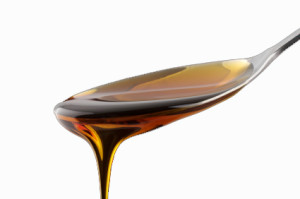Caramel color or caramel coloring is a water-soluble food coloring
Contents
Uses
- Caramel color is one of the oldest and most widely used food colorings, and is found in many commercially produced foods and beverages, including batters, beer, brown bread, buns, chocolate, cookies, cough drops, spirits and liquor such as brandy, rum, and whisky, chocolate-flavored confectionery and coatings, custards, decorations, fillings and toppings, potato chips, dessert mixes, doughnuts, fish and shellfish spreads, frozen desserts, fruit preserves, glucose tablets, gravy, ice cream, pickles, sauces and dressings, soft drinks (especially colas), sweets, vinegar, and more. Caramel color is widely approved for use in food globally but application and use level restrictions vary by country
Benefits
The FDA classifies caramel color as GRAS (Generally Recognized As Safe). That means caramel color may be safely used in foods, as long as it is made according to FDA regulations. Other GRAS ingredients include salt, vinegar, and most cooking spices. The World Health Organization (WHO) also concludes that caramel color is safe.
Cautions
-
Blood Pressure
Although colas have been linked to increased high blood pressure, it was thought that the caffeine in the beverages was to blame. However, a 2005 study in the “Journal of the American Medical Association” found that although regular caffeinated coffee drinkers were not more likely to have high blood pressure, regular cola drinkers were. The researchers concluded that another component in the colas was possibly to blame — the caramel coloring rich in harmful advanced glycation end products.
-
Cancer
The Center for Science in the Public Interest petitioned the Food and Drug Administration in January 2011 to ban two types of caramel coloring that react with ammonia, due to cancerous byproducts they contain known as 2-MEI and 4-MEI. At the same time, the state of California added 4-MEI to its list of chemicals known to cause cancer. Both complaints are based on studies published in 2003 and 2005 by the National Institutes of Health National Toxicology Program that showed the chemicals caused cancer in some mice and rats.
-
Immune System
Caramel coloring III, the type produced with ammonia but not sulfites, may reduce beneficial white blood cell counts in your bloodstream, according to a study published in “Toxicological Sciences” in 1993. The Dutch researchers fed mice a diet with added caramel coloring III for a month and then measured their immune response to Trichinella spiralis, a microbe that causes the disease trichinosis. The mice given the highest levels of caramel coloring had the largest decreases in immune function.
Interactions
- Please talk to your doctor.
Other names
caramel coloring
References
Source: Wikipedia, https://en.wikipedia.org/wiki/Caramel
LiveStrong, http://www.livestrong.com/article/143614-caramel-candy-nutrition/
Caramelddwcolor, http://caramel.ddwcolor.com

